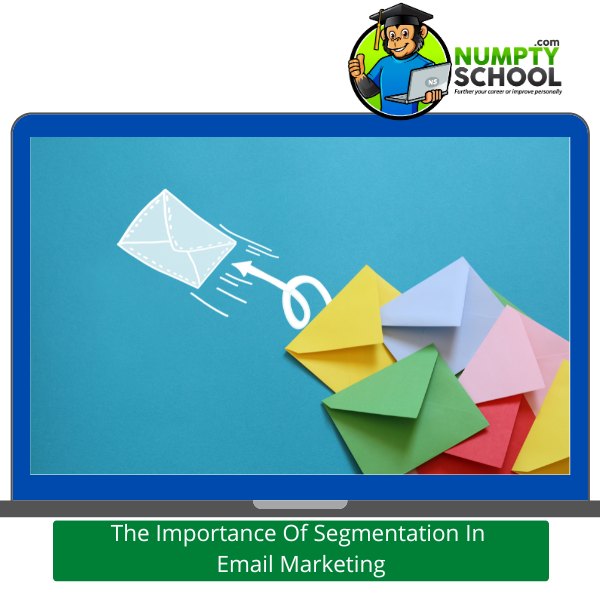The Importance Of Segmentation In Email Marketing

Email marketing has become a cornerstone of modern digital marketing strategies. However, amidst the myriad of tactics and techniques, one aspect stands out as particularly crucial: segmentation. In this article, we’ll delve into why segmentation is vital for email marketing success and how it can revolutionize your campaigns.
Introduction
Segmentation in email marketing refers to the practice of dividing your email list into smaller, more targeted groups based on specific criteria such as demographics, behavior, or preferences. Rather than sending generic messages to your entire audience, segmentation allows you to tailor your emails to the unique needs and interests of different segments. This personalized approach is the key to unlocking the full potential of your email marketing efforts.
Benefits of Segmentation
Segmentation offers a plethora of benefits that can significantly enhance the effectiveness of your email campaigns. Firstly, it enables personalization on a granular level. By crafting content that resonates with the interests and preferences of each segment, you can create a more meaningful connection with your subscribers. This personalized approach fosters stronger engagement and builds trust and loyalty over time.
Moreover, segmentation leads to higher conversion rates. When subscribers receive content that is relevant to their needs, they are more likely to take action, whether it’s making a purchase, signing up for a webinar, or downloading a resource. By targeting specific segments with tailored offers and promotions, you can optimize your conversion funnel and drive tangible results for your business.
Types of Segmentation
There are various ways to segment your email list, each offering unique insights into your audience. Demographic segmentation involves categorizing subscribers based on demographic factors such as age, gender, location, income, or occupation. This type of segmentation helps you better understand the characteristics of your audience and tailor your messaging accordingly.
Behavioral segmentation, on the other hand, focuses on how subscribers interact with your emails and website. By tracking actions such as opens, clicks, purchases, and page views, you can identify patterns and preferences among different segments. This allows you to deliver targeted content and offers based on past behavior, increasing the likelihood of engagement and conversion.
Psychographic segmentation delves deeper into the attitudes, interests, and lifestyles of your subscribers. By segmenting based on factors such as personality traits, values, hobbies, or aspirations, you can create highly personalized campaigns that resonate on a deeper emotional level. This approach fosters stronger connections with your audience and cultivates brand loyalty over time.
How to Segment Your Email List
Effective segmentation requires careful planning and execution. The first step is to collect relevant data about your subscribers, whether it’s through sign-up forms, surveys, or tracking pixels. This data will serve as the foundation for your segmentation strategy, providing insights into the preferences and behaviors of your audience.
Once you have collected sufficient data, you can use email marketing tools to segment your list automatically. Most email marketing platforms offer robust segmentation features that allow you to create dynamic segments based on a wide range of criteria. These tools streamline the segmentation process and enable you to deliver targeted content with ease.
After segmenting your list, it’s essential to continually analyze and refine your segments based on performance metrics such as open rates, click-through rates, and conversion rates. By monitoring the effectiveness of your campaigns and making data-driven adjustments, you can optimize your segmentation strategy over time and maximize the impact of your email marketing efforts.
Case Studies
To illustrate the power of segmentation in email marketing, let’s take a look at some real-world examples of successful segmented email campaigns.
Case Study 1: E-commerce retailer
An e-commerce retailer segmented their email list based on past purchase behavior and product preferences. By sending personalized product recommendations and exclusive offers to each segment, they achieved a significant increase in both open rates and sales conversions.
Case Study 2: SaaS company
A SaaS company segmented their email list based on the stage of the customer journey, from leads to active users to churned customers. By sending targeted onboarding emails, feature announcements, and re-engagement campaigns to each segment, they were able to reduce churn and increase customer lifetime value.
Challenges and Solutions
While segmentation offers numerous benefits, it also presents some challenges that marketers must overcome. One common challenge is the lack of sufficient data to segment effectively. To address this issue, marketers can implement strategies such as progressive profiling, where subscribers are prompted to provide additional information over time.
Another challenge is maintaining segmentation accuracy as your email list grows and evolves. To ensure that your segments remain relevant and effective, it’s essential to regularly audit your data sources, update your segmentation criteria, and adjust your campaigns accordingly.
Future Trends
Looking ahead, the future of segmentation in email marketing is ripe with innovation. Automation and AI technologies are increasingly being leveraged to automate the segmentation process and deliver more personalized content at scale. Dynamic content based on segmentation criteria such as location, device type, or past behavior is also becoming more prevalent, enabling marketers to create highly relevant and engaging email experiences for their subscribers.
Conclusion
In conclusion, segmentation is a fundamental aspect of email marketing that cannot be overlooked. By dividing your email list into smaller, more targeted segments, you can deliver personalized content that resonates with your audience and drives tangible results for your business. Whether you’re a small e-commerce retailer or a multinational corporation, segmentation offers a powerful way to maximize the impact of your email marketing efforts and achieve your business objectives.
FAQs
Why is segmentation important in email marketing?
Segmentation allows you to deliver personalized content to different segments of your audience, leading to higher engagement and conversion rates.
How do I segment my email list effectively?
Start by collecting relevant data about your subscribers, then use email marketing tools to segment your list based on criteria such as demographics, behavior, and preferences.
What are some common challenges of segmentation?
Common challenges include the lack of sufficient data, maintaining segmentation accuracy, and ensuring compliance with data privacy regulations.
How can I overcome segmentation challenges?
To overcome segmentation challenges, focus on collecting high-quality data, regularly auditing your segmentation criteria, and leveraging automation and AI technologies where possible.
What are the future trends in segmentation?
The future of segmentation in email marketing lies in automation, AI, and dynamic content, enabling marketers to deliver highly personalized experiences at scale.



